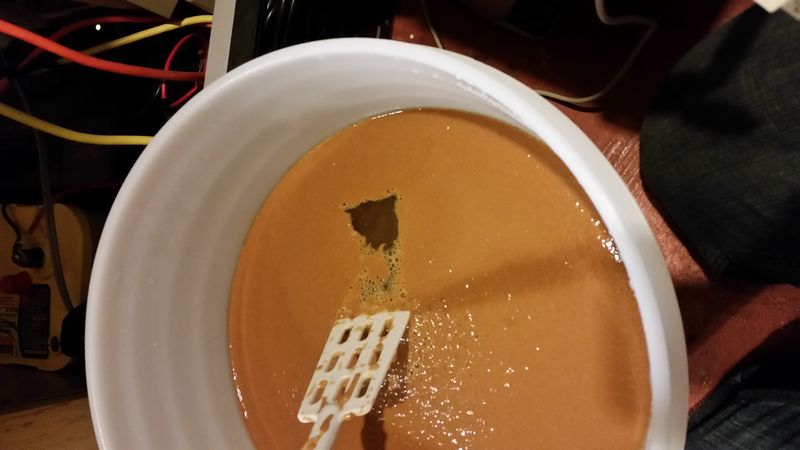I purchased some fresh cider from an orchard in the area and was sure to confirm that no preservatives were added. They claim the cider was pasturized and preservative free.
So I bought 15 liters and a pack of S-04 from the LHBS (a long way from expiration and stored in a fridge), sanitized everything, added some pectic enzyme and yeast energizer and pitched the yeast on the surface per the instructions on the packet.
That was 4 days ago, and today the SG is unchanged @ 1.040. I also stirred and aerated again on the 2nd day.
When I pitched the yeast the cider was cool at 13 C (55 F) but still within the spec of the yeast. I immediately raised the temperature to 20 C (68 F) but still no signs of fermentation. There is a sticky brown "krausen" on the surface but I don't know what that is. It smells somewhat sour:

So... my best guess is the cider was preserved with sorbate despite what they told me. It wasn't cheap ($30) so is there anything I can do to salvage it? Since sorbate doesn't kill yeast but rather blocks reproduction should I just buy some more, perhaps create a starter in some fresh cider without preservatives?
So I bought 15 liters and a pack of S-04 from the LHBS (a long way from expiration and stored in a fridge), sanitized everything, added some pectic enzyme and yeast energizer and pitched the yeast on the surface per the instructions on the packet.
That was 4 days ago, and today the SG is unchanged @ 1.040. I also stirred and aerated again on the 2nd day.
When I pitched the yeast the cider was cool at 13 C (55 F) but still within the spec of the yeast. I immediately raised the temperature to 20 C (68 F) but still no signs of fermentation. There is a sticky brown "krausen" on the surface but I don't know what that is. It smells somewhat sour:

So... my best guess is the cider was preserved with sorbate despite what they told me. It wasn't cheap ($30) so is there anything I can do to salvage it? Since sorbate doesn't kill yeast but rather blocks reproduction should I just buy some more, perhaps create a starter in some fresh cider without preservatives?


